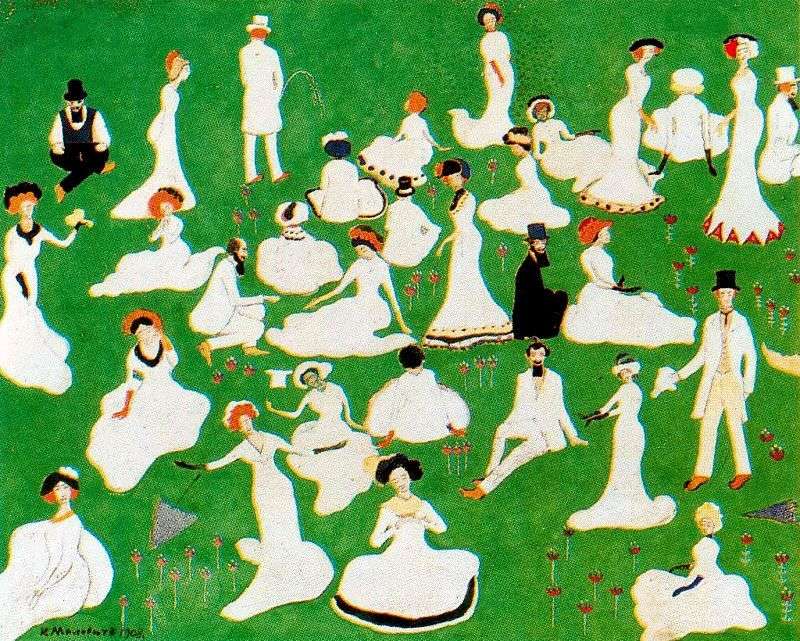
This intricate picture would have the effect of scattered peas if there were no black spots among the riot of white and green. A glance for a moment stops at the bearded figure in the center, then is transferred to the left edge to a man with crossed legs, easily jumps over small areas of black on the left side of the narpavo and returns to the center with a semicircular line to the lady’s dress.
The picture is planar, without spatial depth, it has neither the horizon line, nor the laws of perspective, it is beautiful with its large and clear spots. A similar approach is typical of traditional oriental painting.
Rhythm is important here. The artist sets two rhythms: louder, – figures, more quietly – this is a scattering of colors. Many characters look at the viewer, we seem to take this dear society by surprise, that is, we become participants in the event, the picture has the effect of time.
The joy of life, good-natured irony over contemporaries can be seen in these light figures, the carelessness of the aristocracy, rejoicing spring greens.
The form is so simplified that it resembles a child’s drawing, the color tends to maximize emotional strength. So the influence of modernity and symbolism gradually gives way to Fauvism.
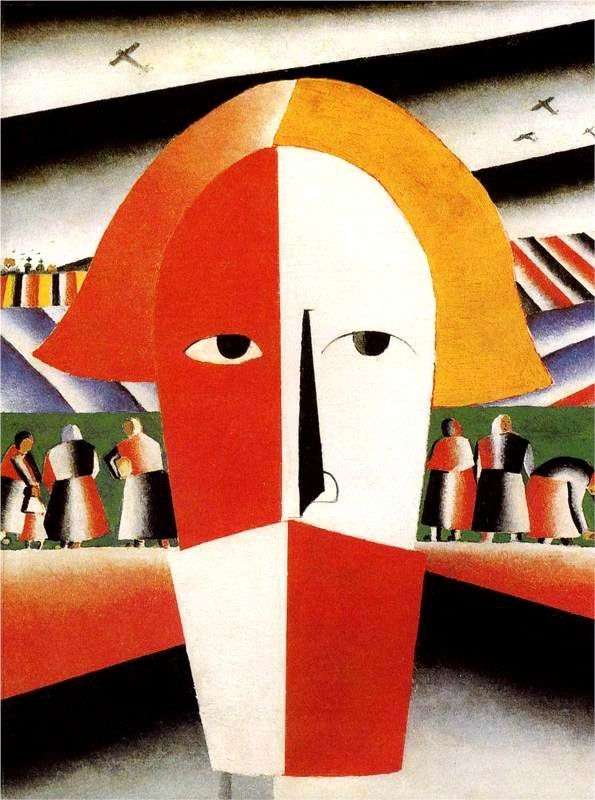 The head of a peasant by Kazimir Malevich
The head of a peasant by Kazimir Malevich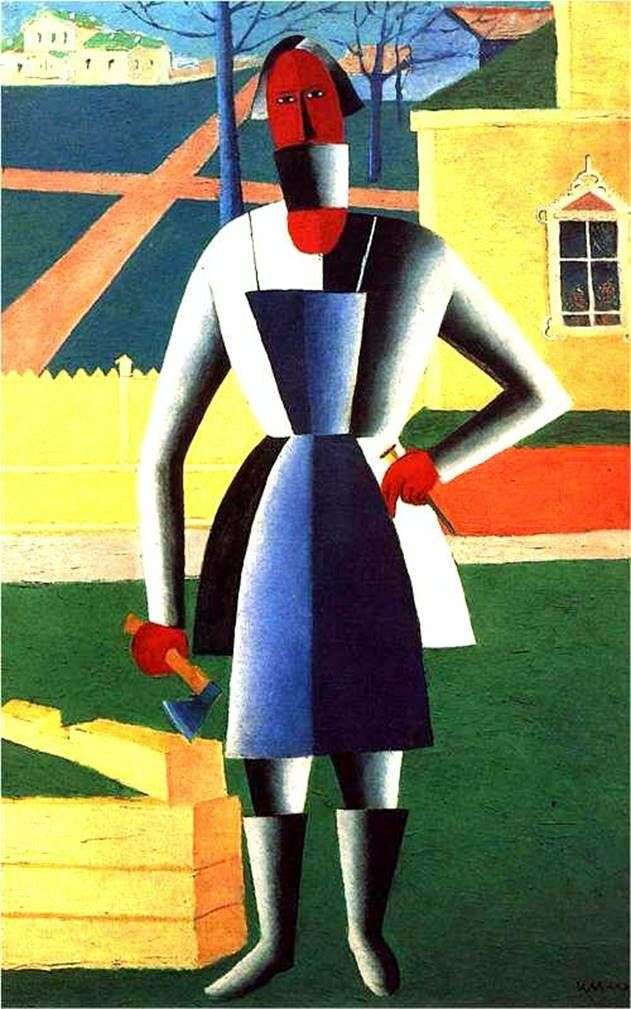 Plotnik by Kazimir Malevich
Plotnik by Kazimir Malevich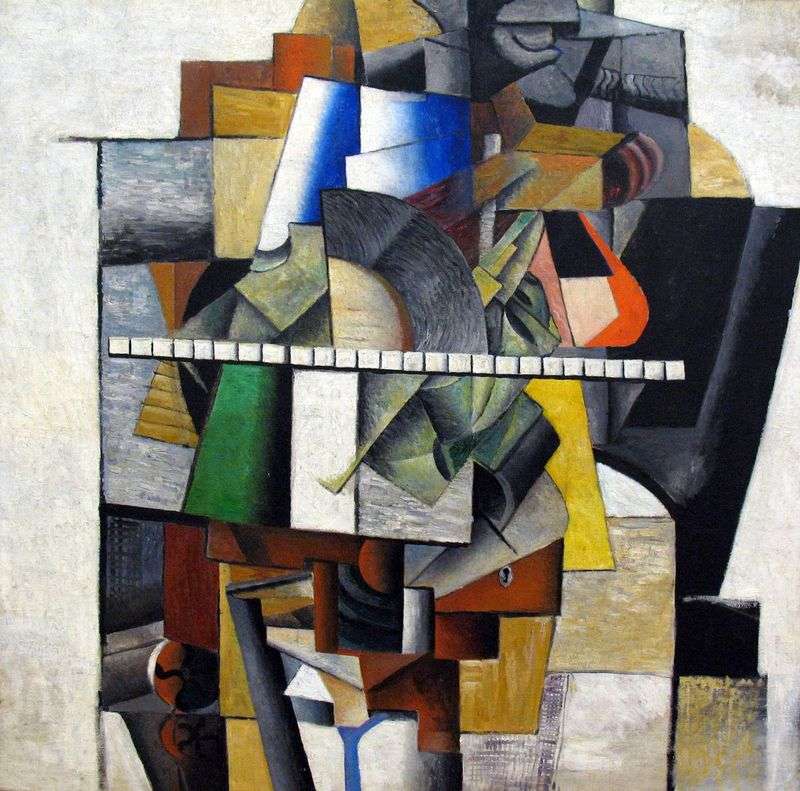 Portrait of the artist M. V. Matyushin by Kazimir Malevich
Portrait of the artist M. V. Matyushin by Kazimir Malevich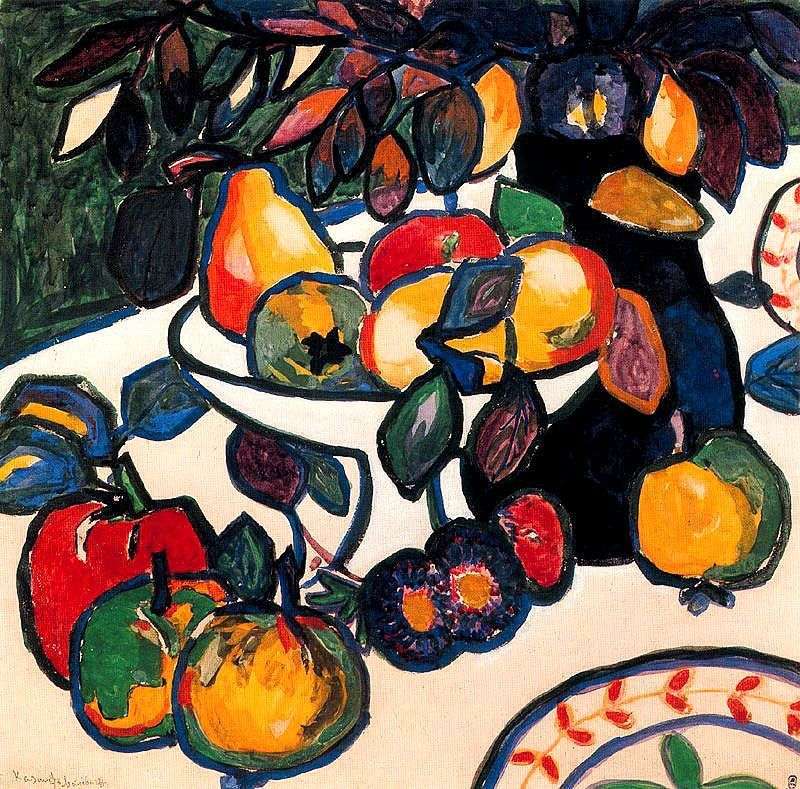 Still Life by Kazimir Malevich
Still Life by Kazimir Malevich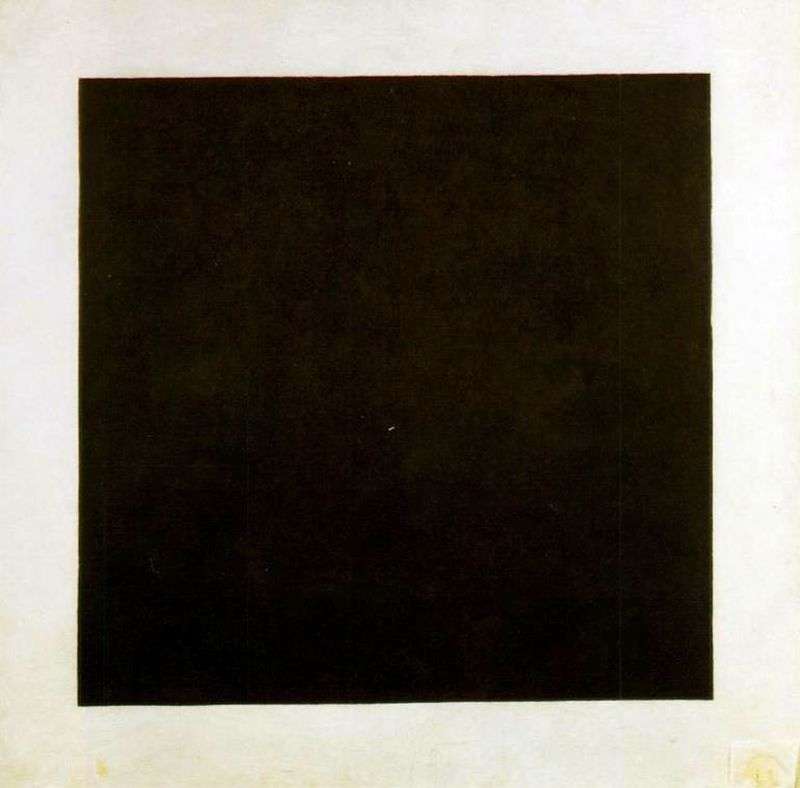 Black Square by Kazimir Malevich
Black Square by Kazimir Malevich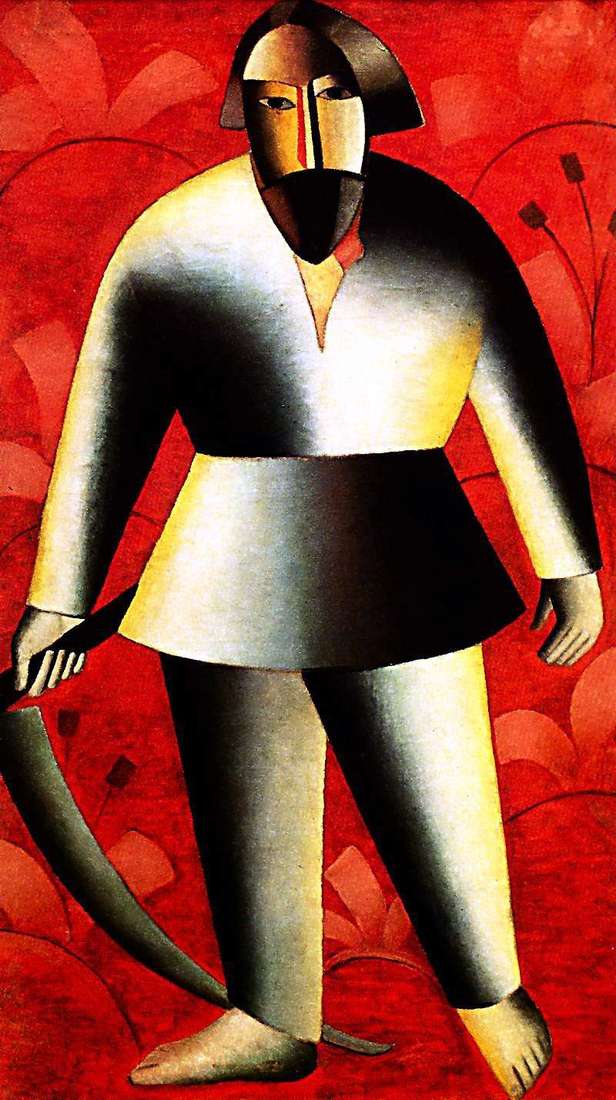 The Peasant (Kosar) by Kazimir Malevich
The Peasant (Kosar) by Kazimir Malevich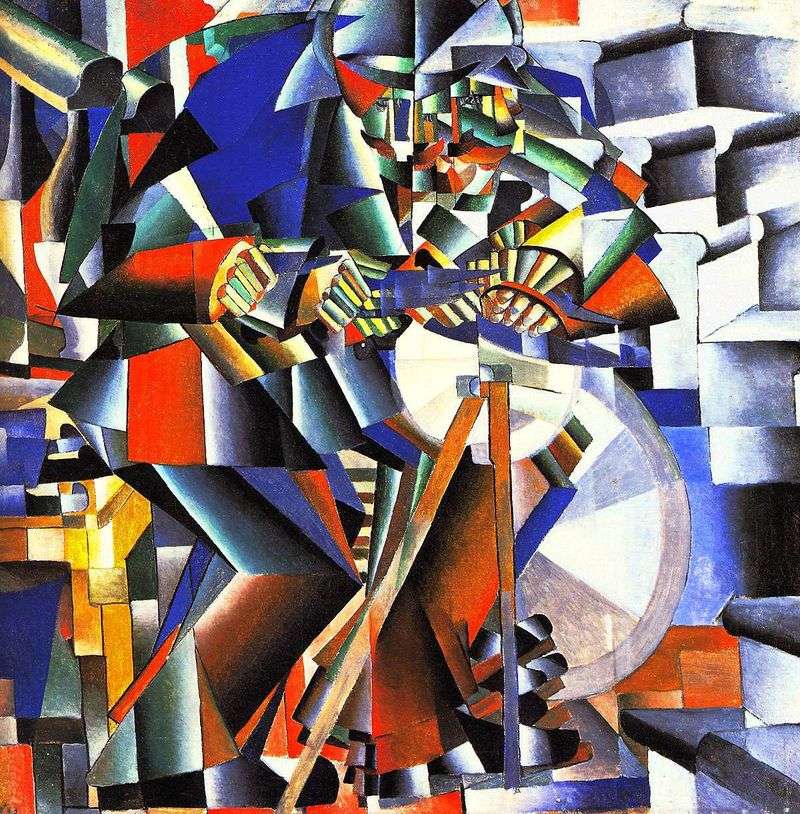 Grinder by Kazimir Malevich
Grinder by Kazimir Malevich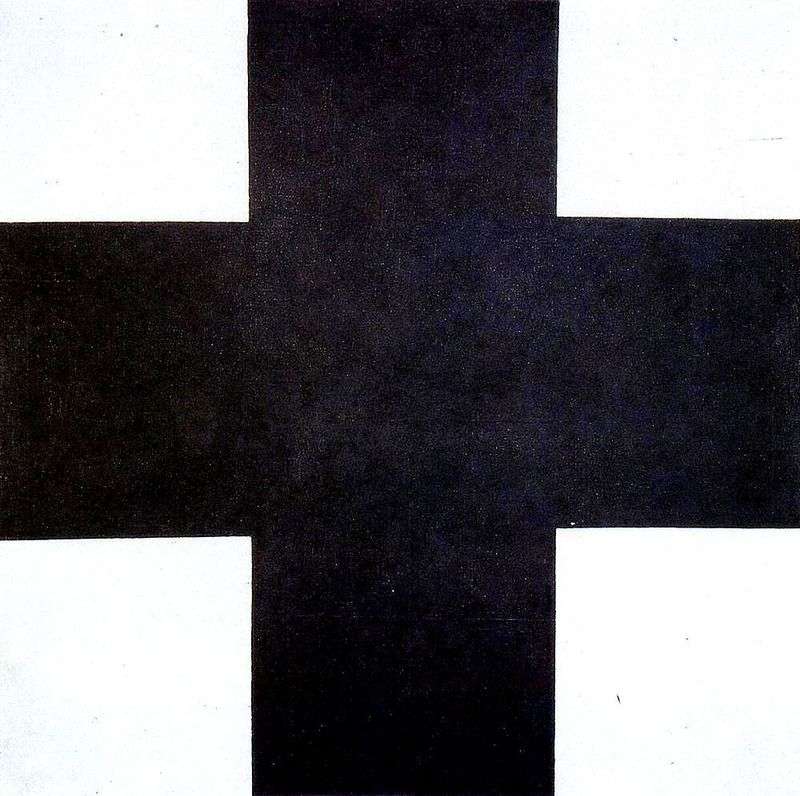 Black Cross by Kazimir Malevich
Black Cross by Kazimir Malevich